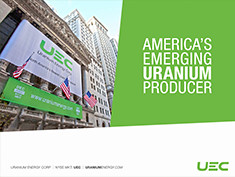Kiggavik
Kiggavik
The Kiggavik Project (“the Project”) is located in the Kivalliq Region of Nunavut approximately 80 km west of the community of Baker Lake. The project operator is Orano.
The project is composed of two sites, the Kiggavik site with three deposits (Main Zone, Centre Zone, & East Zone), and the Sissons Site about 17 km to the southwest with two deposits (Andrew Lake Zone & End Grid Zone). The 2011 IFS proposes mining of four of the five deposits by open pit, with one underground mine at the End Grid Zone. Projected mine production was scheduled over 14 years with a nameplate mill capacity of approximately 9.9 million lb U3O8 / year.
Uranium mineralization at Kiggavik is entirely hosted in basement rocks with no overlying sandstone cover. The mineralization occurs within envelopes of intense clay alteration that is consistent with Athabasca uranium deposits.
There is no shortage of exploration targets for potential expansion of the uranium resources at Kiggavik. Exploration activity has identified 19 areas on the Project that have the potential to host additional uranium resources. Uranium mineralization has been intersected at three of these targets already, (Bong Grid, Granite Grid, and the Jane Prospect) and these have yet to be fully delineated by drilling. The Jane Prospect is along strike of the Andrew Lake deposit and drilling there has already intersected uranium mineralization. Plunging mineralization associated with the Bong Grid is already 400 m x 100 m x 75 m and considered to be open for expansion. Mineralization at the Granite Grid is 250 m x 250 m x 100 m, but more drilling is necessary.
The Project is located within the Archean-aged Woodburn Group rocks of the Rae Province. The Woodburn Group is a typical “greenstone belt” with metamorphosed volcanic rocks and an upper unit of metamorphosed sedimentary rocks. The metamorphic rocks are faulted into contact with, and overlie, basement granitic gneiss of Archean age.
The uranium mineralization in the Kiggavik deposits is typically finely disseminated and less commonly occurs as fracture infill and coatings along cross-cutting structures. The two major uranium minerals are pitchblende and coffinite. Fine-grained uranophane occurs in weathered rocks close to the surface and occasionally at depth. Sulphide and accessory metals are present only in trace amounts in these generally mono-metallic deposits.
Uranium mineralization in the Kiggavik area is hosted for the most part in altered metasedimentary rocks and to a much lesser extent in altered granite. The Kiggavik Main Zone, Centre Zone, and East Zone deposits are located between two regional fault zones. The Main and Center zones are 600 m apart and follow the same east-northeast trending shear zone. The East Zone is approximately 500 m east of Center Zone.
The Andrew Lake deposit is located on a major subvertical east-northeast structure. The subvertical faults associated with the Andrew Lake deposit govern the extension of the mineralization into the basement rocks. There are three main mineralized lenses at the Andrew Lake deposit that are separated by a quartz breccia and the mineralization occurs between 70 and 300 m below ground surface
The End Grid deposit is in an east-northeast trending sequence of metasedimentary rocks. The two main mineralized pods (North Pod and South Pod) are hosted in strongly altered metasedimentary rocks with steeply dipping faults and hydraulic breccias. Mineralization occurs between 75 m and 475 m below surface. The primary uranium mineralization is disseminated within the rocks and along small fractures.

